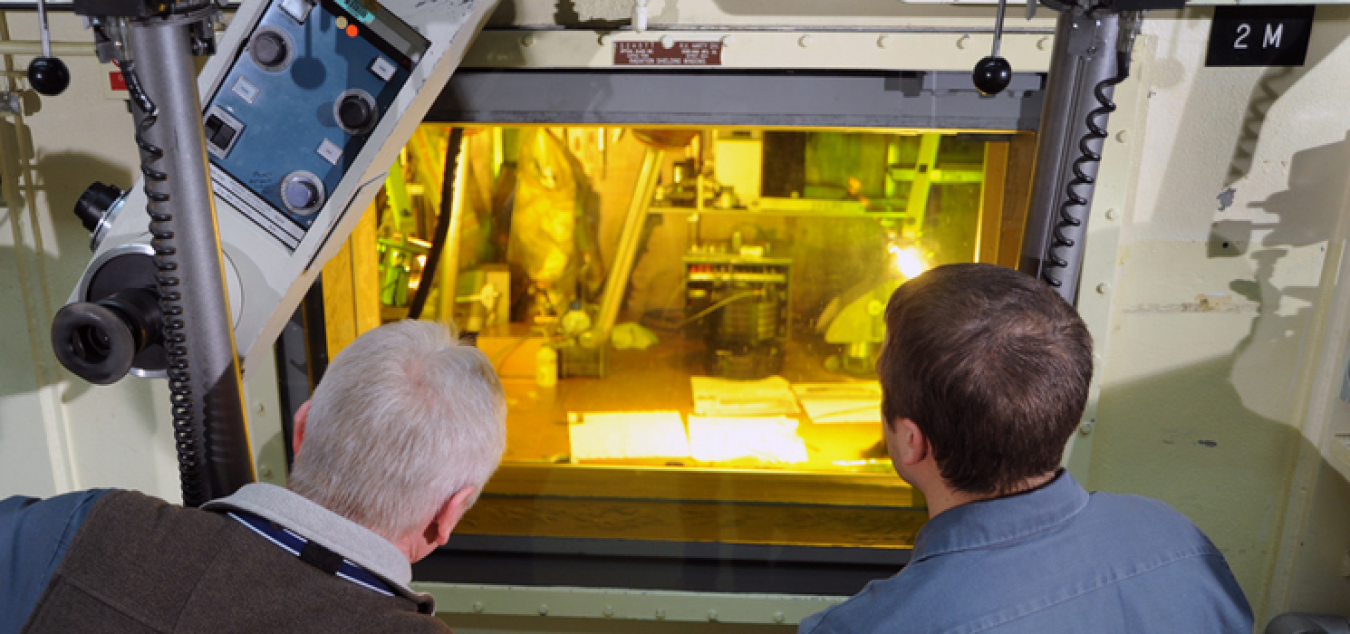
The mission of the Fuel Cycle Research and Development (FCRD) program is to conduct research and development to help develop sustainable fuel cycles, as described in the Nuclear Energy Research and Development Roadmap. Sustainable fuel cycle options are those that improve uranium resource utilization, maximize energy generation, minimize waste generation, improve safety, and limit proliferation risk.
The FCRD program will develop a suite of options to enable future policymakers to make informed decisions about how best to manage used fuel from nuclear reactors.
The overall goal is to demonstrate the technologies necessary to allow commercial deployment of solutions for the sustainable management of used nuclear fuel that is safe, economic, secure, and widely acceptable to American society by 2050.
Fuel Cycle Strategies
The program will examine three fuel cycle strategies: once-through, modified open, and full recycling. Examination of this full range of strategies is critical to provide future decision-makers with adequate information to make decisions on how best to manage used fuel.
Once-Through Fuel Cycle Strategy
The FCRD program will develop fuels for use in reactors that increase the efficient use of uranium resources and reduce the amount of used fuel requiring direct disposal for each megawatt-hour of electricity produced. Under the once- through fuel cycle strategy, developing ways to increase the availability of fuel resources is critical, although resource extension is important for all fuel cycle options.
Modified Open Fuel Cycle Strategy
The FCRD program will investigate fuel forms and reactors that would increase fuel resource utilization and reduce the quantity of long-lived radiotoxic elements in the used fuel to be disposed, with limited or no separations steps, using technologies that substantially lower proliferation risk. Additionally, the FCRD program will evaluate the inclusion of non-uranium materials as reactor fuel options that may reduce the long-lived radiotoxic elements in the used fuel for repository disposal.
Full Recycle Fuel Cycle Strategy
The FCRD program will develop techniques to enable the long-lived actinide elements to be repeatedly recycled rather than disposed. The ultimate goal is to develop a cost-effective and low-proliferation-risk approach that will dramatically decrease the long-term risk posed by the waste, reducing uncertainties associated with its disposal.
A New Approach to R&D
The FCRD program seeks to develop innovative and transformational options within each of the fuel cycle strategies, leading to the research, development, and demonstration (RD&D) of the best options. A new approach to R&D, along with new partnerships, methods, and technologies, will contribute to the achievement of this goal. The FCRD program will focus on science-based R&D that integrates theory, experiment, and high-performance modeling and simulation.
Scientific Collaboration
DOE’s Office of Nuclear Energy (NE) has a diversified portfolio of research and development programs. NE allocates R&D funding to the best qualified entities (e.g., national laboratories, universities, and industry) to conduct the work in support of NE’s mission. NE R&D activities typically require highly specialized R&D facilities and capabilities that are primarily available only at DOE national laboratories.
Consistent with NE’s commitment to supporting R&D activities at university and educational research institutions, NE designates at least 20 percent of funds appropriated to its R&D programs for work to be performed at university and research institutions through open, competitive solicitations for investigator-led projects. Universities often collaborate with the DOE national laboratories, thereby expanding the base of highly qualified engineers and scientists in the future.
The Fuel Cycle R&D program also collaborates with nuclear industry and international partners with advanced fuel cycles to leverage U.S. research investments and pursue common goals toward advanced fuel cycles that are economic, minimize waste, and reduce proliferation risk.

